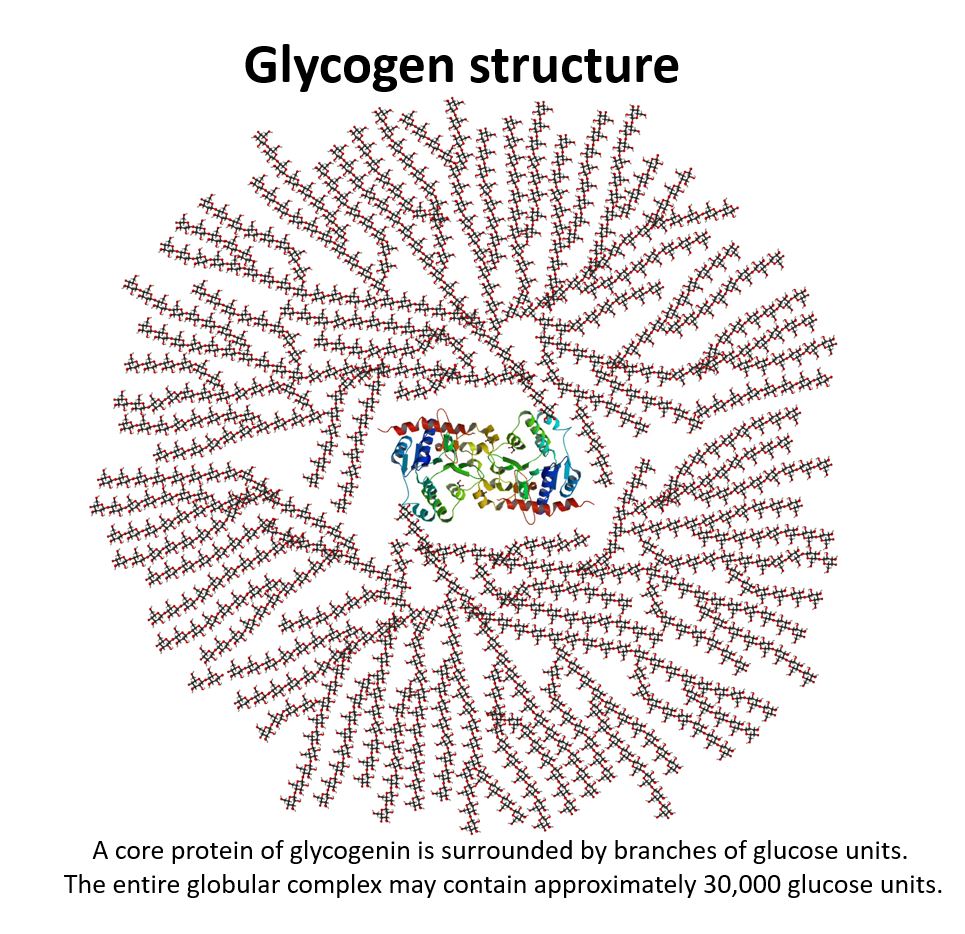Playlist
Show Playlist
Hide Playlist
Glycogen Metabolism: Glycogen Synthesis
-
06 Advanced CarbohydrateMetabolism3.pdf
-
Reference List Biochemistry.pdf
-
Download Lecture Overview
00:01 So what you have seen so far is all the reactions involved in the breakdown of glycogen. 00:05 It's a very simple pathway. And as we will see the synthesis of glycogen is almost as simple. 00:13 In the synthesis of glycogen we start with glucose-1-phosphate. 00:18 So, where would glucose-1-phosphate come from originally? Well imagine that you had a cell that had gotten a bunch of glucose into it. 00:26 The cell could use hexokinase in the glycolysis pathway to convert glucose into glucose-6-phosphate. 00:31 And the phosphoglucomutase which catalyzes the reversible reaction, I showed earlier, can convert glucose-6-phosphate back to glucose-1-phosphate, as you see here. 00:41 Now that turns out to be pretty important; because, cells, liver cells in particular, will release glucose. 00:48 They will also take up glucose after a meal, for example when the glucose concentrations are high. 00:55 Dealing with that glucose is important and storing it as a glycogen as we see here is essential for them to do. 01:01 So that phosphoglucomutase plays a dual role both in the breakdown and the synthesis of glycogen. 01:08 Glucose-1-phosphate in the first step of glycogen synthesis combines with a molecule called UTP. 01:14 Now UTP is, of course, a ribonucleotide that's used in the making of RNA. 01:18 In this case it's used to make a molecule that can be used to build glycogen. 01:25 Now the enzyme that catalyzes this reaction is UDP-glucose pyrophosphorylase, as you can see. 01:29 And what happens in this reaction is that a pyrophosphorylase, the PPi that you can see in the lower part of the figure on the lower right is released and the remaining part, the UDP is attached to the glucose molecule. 01:45 Now that bond between the glucose molecule and the UDP is a high energy bond, is an example of what I'd like to call an activated intermediate. Now activated intermediates have a very important property. First of all, they have high energy bonds. 02:03 And the high energy bonds are used to transfer a part of themselves to something else. 02:09 Now that's actually what we see in this image on the screen. 02:14 UDP-glucose is getting ready to use it's energy to transfer a part of itself to glycogen and the part of itself that its transferring of course is glucose. 02:23 So this is a reaction that is catalyzed by glycogen synthase, as you can see, and it's a fairly simple reaction. 02:30 What the glycogen synthase is doing, is grabbing that glucose and making a 1,4 bond so that the glycogen chain is growing by 1 more glucose. 02:41 The remaining product UDP can then go back and be a phosphorylated and used for making RNA or making additional UDP-glucoses. 02:51 Now, of course, all the glycogen synthase is going to do is make a glycogen with α-1,4 bonds and you recall that glycogen has many branches. 03:01 So, then question is how do the branches get there? And the branches get there by an enzyme that has a name that is very long that most people call branching enzyme and so I have decided to call branching enzyme here. 03:13 You can see that what branching enzyme does, is it grabs a section of a long α-1,4 polymer of glucose on a glycogen chain and then clips it and transfers part of it backwards to where it can make an α-1,6 bond with another sugar. 03:28 And it is in this way that the branches actually get into glycogen.
About the Lecture
The lecture Glycogen Metabolism: Glycogen Synthesis by Kevin Ahern, PhD is from the course Carbohydrate Metabolism.
Included Quiz Questions
Which of the following is true of UDP glucose?
- It is an activated intermediate with a high-energy bond.
- It is made starting with UDP and glucose.
- It is a substrate for glycogen phosphorylase.
- It is a substrate for branching enzyme.
- It is the storage form of glucose in liver cells.
What linkage is formed by branching enzyme in glycogen synthesis?
- α(1→6) linkage
- α(1→4) linkage
- β(1→6) linkage
- β(1→4) linkage
- γ(1→6) linkage
Customer reviews
5,0 of 5 stars
| 5 Stars |
|
1 |
| 4 Stars |
|
0 |
| 3 Stars |
|
0 |
| 2 Stars |
|
0 |
| 1 Star |
|
0 |
The lecture simplified glycogenesis to extreme simplicity. It truly helped save around 30 minutes from my lecture, by providing adequate information




